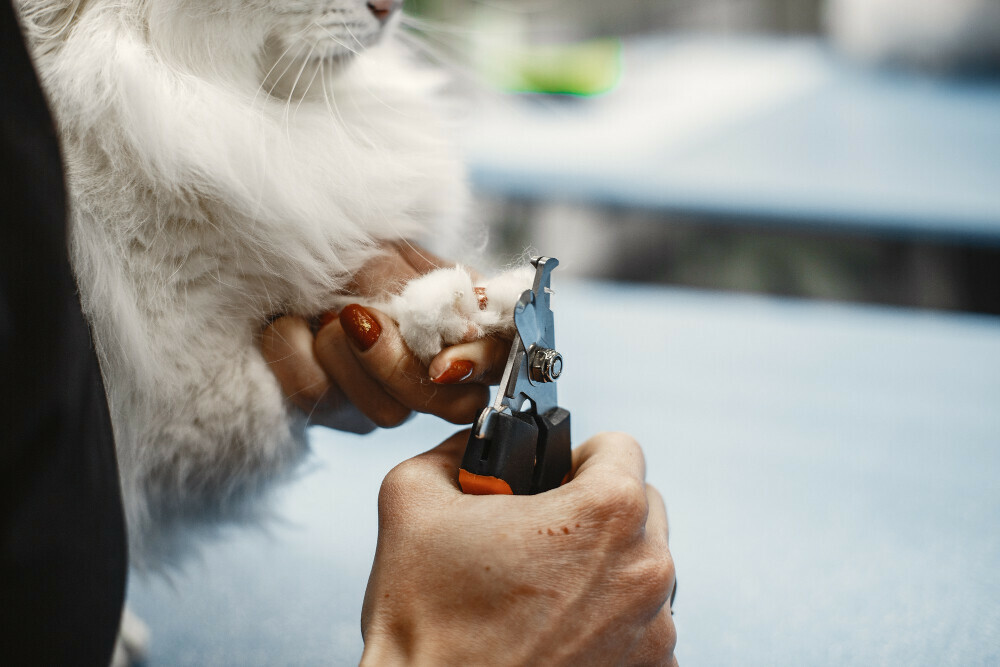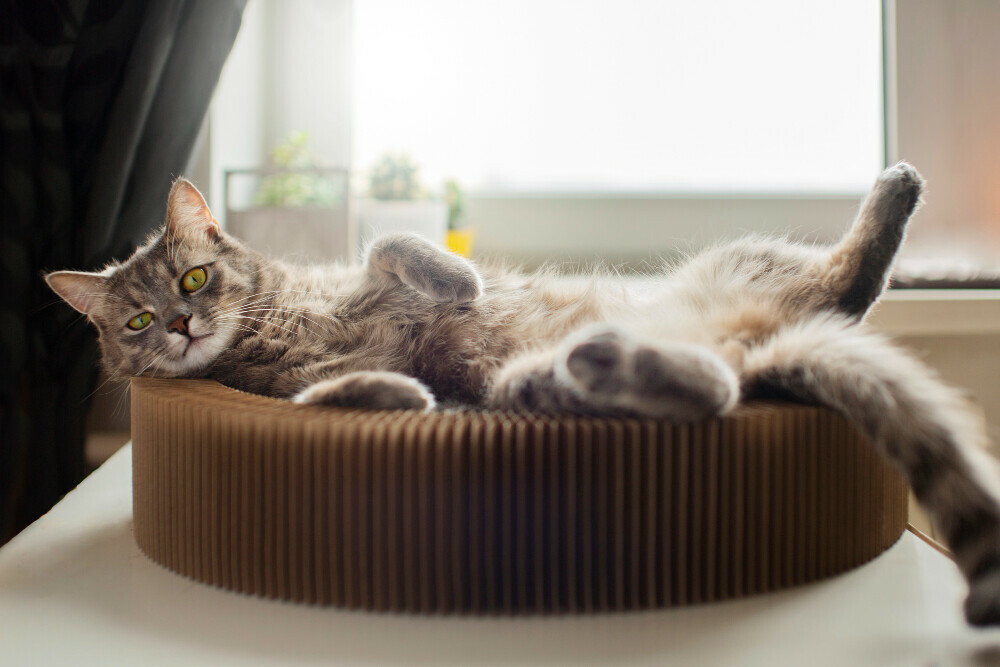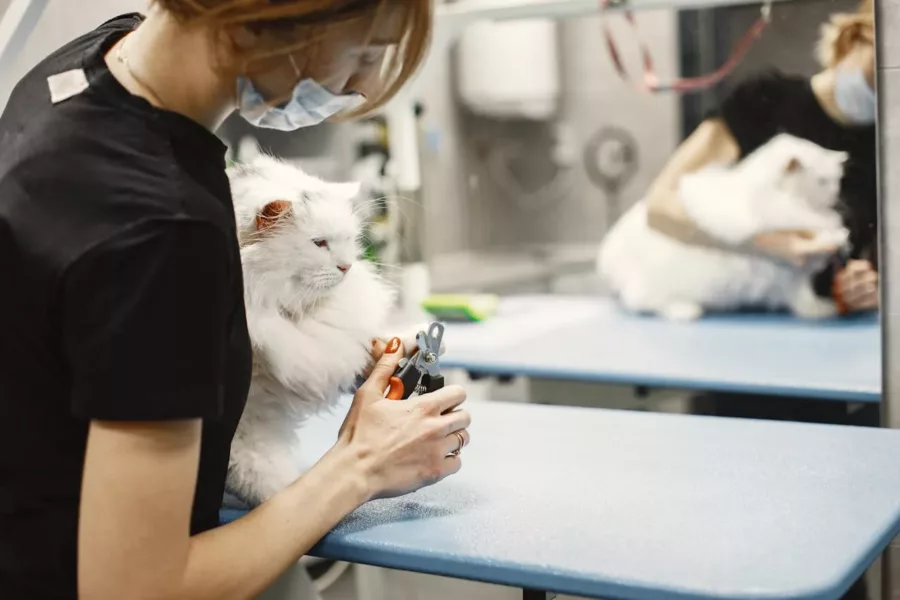You’re going to find out about the importance of keeping your cat’s nails trimmed, a crucial part of their health and overall well-being. I’m not just talking about saving your furniture from scratches; it’s also about preventing nails from growing too long and causing your cat discomfort or even pain.
Many cat owners believe that trimming their feline’s nails is too difficult or potentially harmful, leading to unnecessary stress for both pet and owner. I’m here to help you dispel these myths. Not only is learning ‘how to trim a cat’s nails at home’ simpler than you might think, but with the right approach, it can be a bonding experience for you and your furry friend.
By managing your cat’s nail care at home, you directly contribute to their comfort and mobility. Plus, it’s a money-saver and a good opportunity to check on the overall health of your cat’s paws. Regular home grooming means you’ll catch any issues, such as cracks or infections, earlier rather than later.
Step-by-Step Guide: Trimming Your Cat’s Nails at Home
The Right Tools

You’ve decided to take on the grooming tasks for your feline friend, and that’s going to include learning how to trim a cat’s nails at home. But before you make the first snip, you need to prepare both yourself and your pet for what’s to come. Gathering the right tools is where you start. You’ll need a high-quality pair of cat nail clippers, some styptic powder in case of any mishaps, and lots of treats to reward your cat for their patience.
A Calm Space

Next, creating a calm space is crucial. Cats can sense tension, and if they do, good luck trying to get them to cooperate. Choose a quiet room without distractions and get comfortable. It’s best to approach this task when your cat is sleepy or has just woken up from a nap. You might even consider wrapping your kitty in a towel to gently constrain them and prevent sudden movements.
The Whole Process
Follow these steps to ensure a smooth and safe nail trimming process. With patience and practice, you’ll become more confident in your ability to care for your cat’s nails.
Step 1: Handle Your Cat’s Paws
Start by getting your cat comfortable with having its paws handled. Gently touch and hold your cat’s paws for a few seconds each day, gradually increasing the time. Reward your cat with treats and praise to create a positive association with this handling.
Step 2: Examine the Nails
Before you begin trimming, take a moment to examine each nail. Identify the quick, which is the pink part inside the nail where blood vessels and nerves are – you’ll want to avoid cutting this sensitive area. If your cat has light-colored nails, this should be relatively straightforward. For dark nails, trim a small amount at a time to avoid cutting into the quick.
Step 3: Position Your Cat
Find a comfortable position for both you and your cat. You can place your cat on your lap, on a table, or even wrapped in a towel if necessary. If your cat is particularly fidgety, you might need a second person to help hold the cat still. Ensure your cat feels secure but not overly restrained, as this can increase anxiety.
Step 4: Make the Cut
Hold the clippers in one hand and gently press on your cat’s paw with the other to extend the nail. Position the clippers perpendicular to the nail and make a quick, decisive cut. Aim to trim just the tip of the nail, avoiding the quick. It’s better to cut too little than too much.
Step 5: Reward and Comfort Your Cat
After trimming a nail, give your cat a treat and some praise. This positive reinforcement helps your cat associate nail trimming with a rewarding experience. If your cat becomes too stressed or agitated, take a break and try again later. It’s important to keep the experience as positive as possible.
Common Challenges
Regardless of how careful you are, sometimes a quick is nicked and there might be a little bleeding. Don’t worry too much about this. Apply some styptic powder to the bleeding nail and apply a little pressure. Bleeding usually stops within a few minutes. Meanwhile, keep rewarding your cat—positivity goes a long way during nail trimming sessions.
As you become more adept at nail trimming, you’ll find the process less daunting, and so will your cat. Remember, your first attempt doesn’t need to be your last. With patience and practice, you can turn this into a regular bonding activity. And if the experience gets tough, professional groomers are always a safer bet for nervous cats (and owners).
Maintaining Your Cat’s Nail Health Between Trims
Now, you’ve mastered the art of trimming your cat’s nails at home, but upkeep is equally important. Regular maintenance ensures your furry friend’s paws stay in tip-top condition, preventing discomfort and potential furniture disasters. Let’s explore how often you should engage in this routine and proactive measures to promote natural nail care.
Frequency of Trims
The frequency of nail trims largely depends on your cat’s lifestyle and nail growth rate. Indoor cats may require more frequent trims, typically every couple of weeks, while outdoor explorers might naturally wear down their nails. However, keep a close eye on their paws—overgrown nails can become painful.
Maintenance Behaviors

Encouraging your cat to use scratching posts or pads can significantly help maintain their nails between trims. Position these items around your home to make them easily accessible. It’s a win-win: your cat gets a proper outlet for their scratching instincts, and you protect your furniture and carpets.
Additionally, monitor your cat’s paw health. Check for any signs of infections or injuries, especially if they’ve had a nail-trim mishap. If anything seems off, don’t hesitate to reach out to your veterinarian.
Remember, like any form of care, nail trimming and maintenance is an act of love. With patience and consistency, you’ll ensure your cat’s paws remain healthy, and your bond will only grow stronger. If you have questions or need further advice, there’s a wealth of information out there, or better yet, consult your vet—they’re your best resource for your pet’s well-being.




